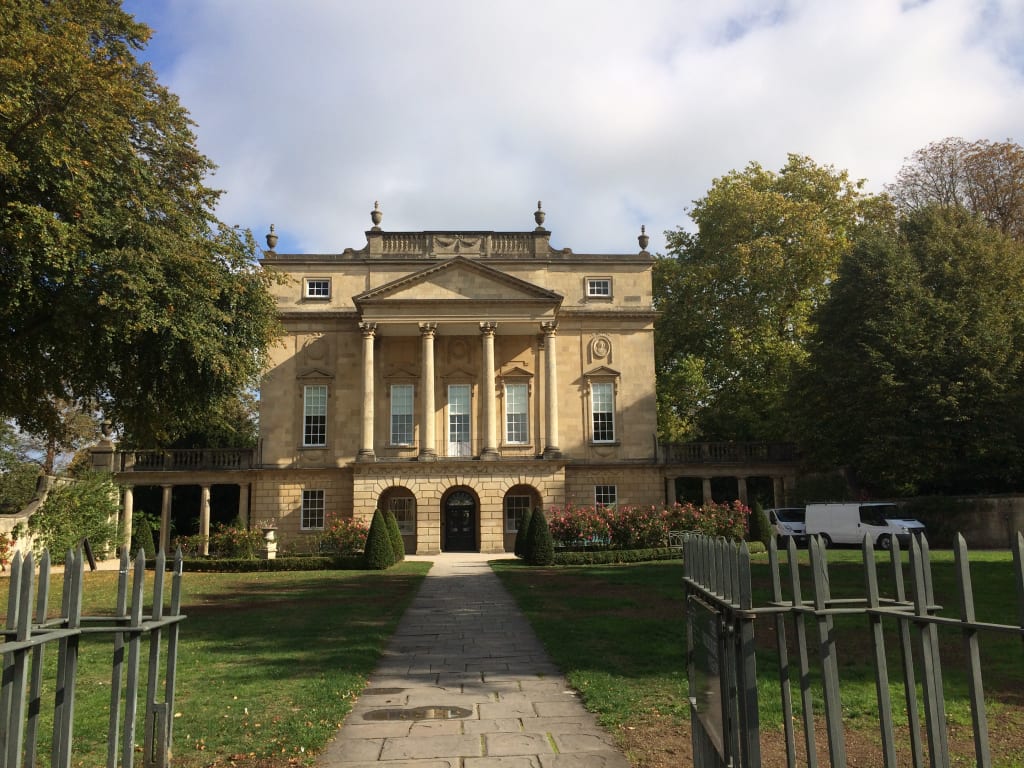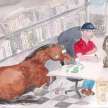The Holburn Museum, Bath
From Dessert to Desert

Beyond Pulteney Bridge and Coffee Bridge, where incidentally they serve the most fabulous hot a steamy pulled pork bap, is Great Pulteney Street.
If you can resist the temptation to return to the main part of Bath via the Victorian Market and have another couple of hours in your schedule then take a walk along this street.
Great Pulteney Street Facts and Figures
• Commissioned by Sir William Pulteney
• Designed by Thomas Baldwin
• Completed in 1789
• Length—just over 1,000 feet
• Width—100 feet
• Famous past residents include Jane Austen and William Wilberforce
Prima facie for its entire 1,000-foot length there is a visual symmetry between the two facades facing each other. Only the keenest observer with hawk like eyes that could spot a mouse from 500 feet will be able to notice the ever so slight differences between the north and south side. This slight variations include the number of steps leading up to main entrances, the width of doors and whether or not the black drain pipes from the guttering are exposed or hidden. Beyond the facades there is no symmetry as different parts were designed as private residences, hotels and government offices.
At the end of Great Pulteney Street facing back towards Pulteney Bridge is the Holburn Museum.
Holburn Museum Facts and Figures
• Designed by Charles Harcourt Masters
• 1796—foundation stone laid
• 1799—building work complete and the Sydney Hotel opened
• 1836—hotel closed and converted to a private residence
Behind the pillared Palladian front is severely minimalist gift shop and entrance hall. At the ticket desk the entry fee is £11 for adults, £5.00 for students and those between 19 to 25 years old and discounts available for groups of ten or more with the advice to make arrangements in advance. Every Wednesday after 3 pm entry us free and also between 5 pm and 9 pm on the last Friday of the month.
The museum acquired its name in memory of Sir William Holburn (1793 – 1874). His promising career in the Royal Navy was cut short when he unexpectedly inherited some wealth. After resigning his commission and returning home he immediately set off for a Grand Tour of Europe and it was during this tour that his passion for collecting fine art and artifacts was ignited. That passion remained alight for the rest of his life. Having no heirs to leave his collection to he bequeathed it to the City of Bath so that it could be displayed and enjoyed by as many people as possible.
In 1916 his private collection finally took up permanent residence here at the museum.
Most of my time during my visit was spent in what was the ballroom for the Sydney Hotel which spans the full width of the front of the building on the first floor. This room now houses a dining table laid for the guests of a Georgian or Regency dinner which has been frozen in time behind glass screens in permanent readiness for the guests that will never arrive. The table is laid out with individual place settings of the finest porcelain, silverware and glassware immaculately placed like soldiers of the Household Regiments. Along the centre of the table are ostentatious displays of serving dishes and table art. In between the place settings are discrete slate grey disks where the bread plates would be placed. Embossed on the slates are little quotes and recipes from gourmands who may well have attended such a meal when the building was the Sydney Hotel.
One slate carried the following quotation:
“Five hours at the dinner table are a reasonable latitude when the company is numerous and no lack of good cheer.”
(Dick Humel Bergius Secondus in 'Apician Morsels of The Table, Kitchen and Larder, 1829.)
“Five hours” for one meal is quite a sitting and one immediately wonders how the ladies and gentlemen diners managed the most basic of bodily functions other than eating and drinking under such constraining conditions?
“Five hours” proved too much for a French visitor who described English dinners as “…one of the most wearisome of English experiences.”
I also wondered what Secundus and the anonymous French visitor would have thought about the twenty minutes it took for me to enjoy the hot bap at Bridge Coffee?
Among the recipes embossed on the slate grey disks the one that stood out the most was for ‘Parmesan Ice Cream. The recipe looked interesting and at the end of this article is a link to an online version for those of you brave enough to stretch your pallets with a savoury sweet ice cream dessert.
For a break from wonderment at the table display look out of the central window of this room back towards Pulteney Bridge along Great Pulteney Street and you will see a perspective of the street that confirms its overall symmetry from another direction.
The museum puts on temporary exhibitions throughout the year and when I made my visit there was one about Ellen Georgiana Tanner (1847 – 1937) which took from "dessert" to "desert."
Miss Tanner, like Sir William Holburn, inherited some wealth. Instead of using it to maintain a life of luxury she chose to use the wealth to fund travel. What she is particularly famous for is for adventuring into the Middle East. Traveling on horseback with local guides and staying in ‘caravanserai’ along routes traversed for centuries by the camel trains of traders. Her travels took her to Basra and Baghdad in Iraq and on to Tehran, Isfahan and Shiraz in Persia now named Iran.
Miss Tanner travelled these routes two years after Gertrude Bell arrived in Tehran where her flame of passion for the region was ignited but her travels into the deep desert did not really start until 1899 five years after Miss Tanner had started clocking up the desert miles. Yet it is Gertrude Bell of the two intrepid women who has acquired the most enduring fame with a biography, a film and Wikipedia references. Whereas my searches for Miss Tanner on Wikipedia have not produced any results.
In the rest of the museum, which I went through in my pursuit of the Tanner exhibition, there are display cases with collections of silver and gold artefacts collected by Holburn and added to by subsequent administrators of the museum.
And all the while I was walking around the museum pictures by Holbein, Bruegel, Gainsborough and Stubbs looked down on me. The staff in the rooms are friendly and will always answer any questions you may have about the exhibits.
That was all the time I had before returning to the centre of Bath to find one more place in the City that I really wanted to see. This lead to an accidental and very interesting encounter through a navigation error.
Link to the Holburn Museum, Bath
The recipe for Parmesan Ice Cream—for the Brave
Apician Morsels or Tales of the Table, Kitchen and Larder—5 Hours for Dinner
Apician Morsels or Tales of the Table
Pulteney Bridge and the Best Baps in Bath
About the Creator
Alan Russell
When you read my words they may not be perfect but I hope they:
1. Engage you
2. Entertain you
3. At least make you smile (Omar's Diaries) or
4. Think about this crazy world we live in and
5. Never accept anything at face value






Comments
There are no comments for this story
Be the first to respond and start the conversation.